Everything you need to know about wall moldings
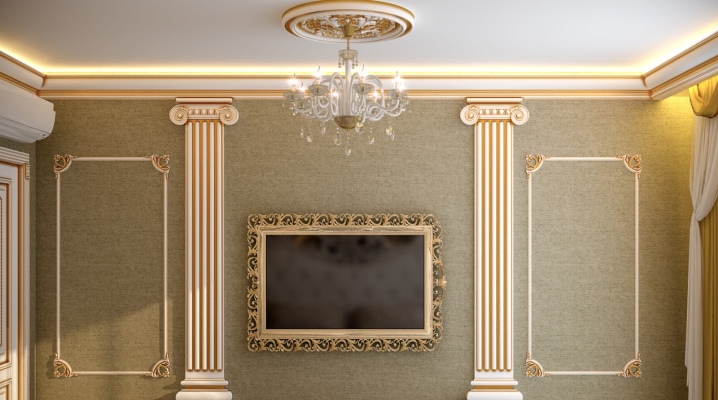
This article covers everything you need to know about wall moldings. Described are decorative PVC wall moldings for wallpaper and aluminum frames, other options, and their use in interior decoration. Attention is also paid to such a topic as how to attach them to the surface.
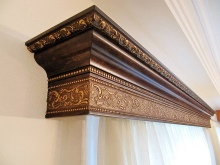
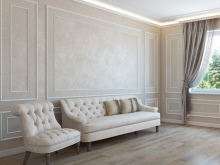
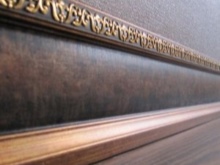
What it is?
A baguette on a wall is a finishing material often used in practice. This design looks like a smooth or profiled bar. It is used as a decorative frame for a wall picture or mirror. But the same decor item is also suitable for wallpaper on the wall (although there is a subtlety here that will be discussed later). And some decorators even use it for ceiling mounting.
Strictly speaking, initially such elements were intended only for paintings. Now, on their basis, they get:
-
skirting boards;
-
moldings;
-
various types of platbands.

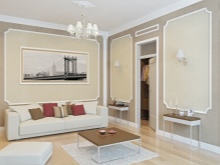
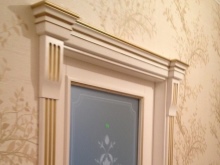
The appearance of baguettes has become significantly more diverse. But more important from a practical point of view, they perform 3 key functions:
-
protection against mechanical stress and water ingress;
-
visual masking of all kinds of deformations and disturbed sections of the wall;
-
increasing the overall aesthetics, complementing the design concept.
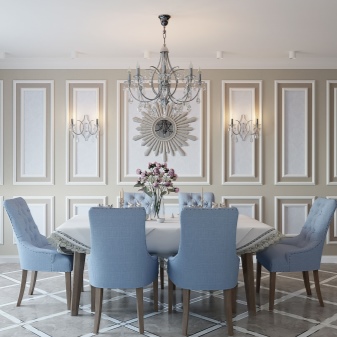
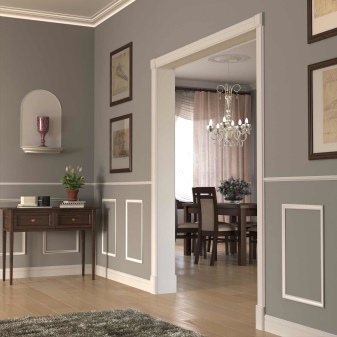
Species overview
Baguettes should be conventionally divided into several groups depending on the material and width.
By material
A wall molding is not necessarily made of wood. This was done only in the past, when it was not possible to make a different design for the same paintings. But the spread of modern technologies has significantly expanded the design possibilities. Polyurethane models are quite popular. They are both flexible and visibly strong.
With their help, you can arrange even rather complex curvilinear interior elements. But more widely used plastic wall moldings based on PVC.
This product is also suitable for decorating the joint between the wall and the stretch ceiling. In this case, the locating edge of the tenon-and-slot formation is used.
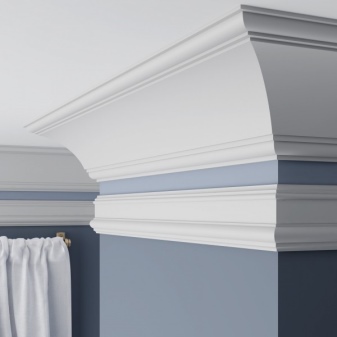
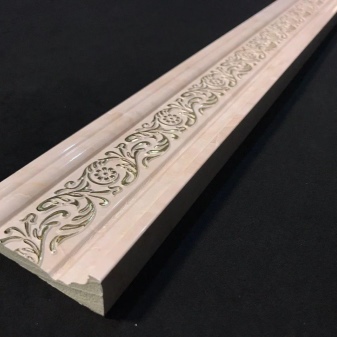
Foam models are praised for their budget. But the low price is their only advantage. Polyfoam breaks and crumbles very easily, literally from any touch. You will have to handle it carefully not only during installation, but also during further use. But the foam is amenable to the application of quick-drying and low-odor water-soluble paints.

It is worth considering the features of aluminum wall moldings. Strictly speaking, pure aluminum is not used there. Only alloys based on it are used. Such structures do not need to be systematically painted or protected from the normal home environment. The slats based on aluminum alloy will mask the corner and the assembly seam, and will be an excellent decoration for a mirror or poster.
This solution is most welcome in a high-tech environment.
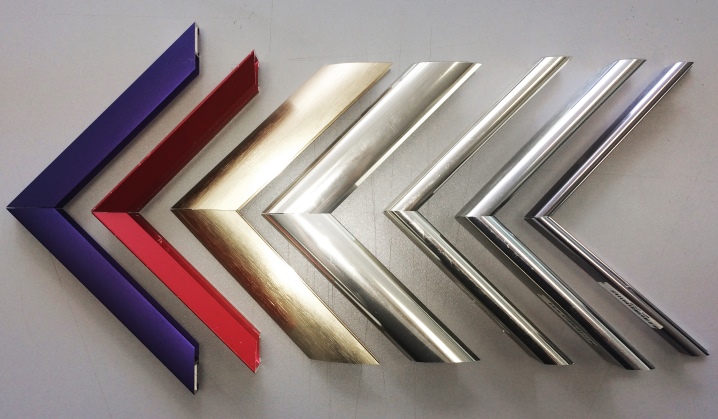
By width
Width is the main characteristic of a baguette. Depending on it, skirting boards are:
-
narrow;
-
wide.
There are many design techniques that help determine the thickness of the product in each case. So, if the room has high ceilings, then it is better to arrange them with wide baseboards, but if they are less than 3 meters, a narrow baguette is used. If you want to decorate a doorway with molding, it is better to use a wide version here. In narrow and long rooms, wide ones will also look more harmonious.
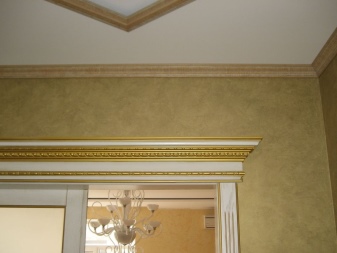

But as an independent element, for example, for frames, you can take a narrow material. But here we are talking not so much about the size of the frame, but about the dimensions of the baguette corners as a whole, in full format. In assessing such an indicator, you will have to be guided only by:
-
own preferences;
-
aesthetic taste;
-
the size of the proportions.
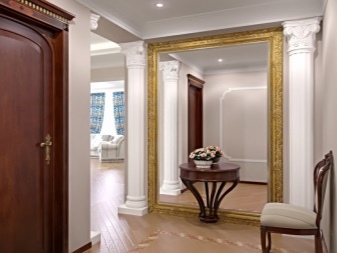
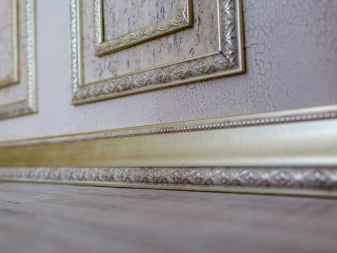
However, it's not worth looking for ready-made recommendations. In fact, you must always look for suitable solutions for a particular image. And it can "individually" accept a frame of any width.
And even the proportions can vary almost indefinitely. The opinion of many customers that a small picture in a large baguette will not look good is based only on fear and misunderstanding of the situation. Computer visualization programs help to solve the problem in part.
Corner molding is predictably placed at the corners of the premises, which allows you not to "cut" the frame.
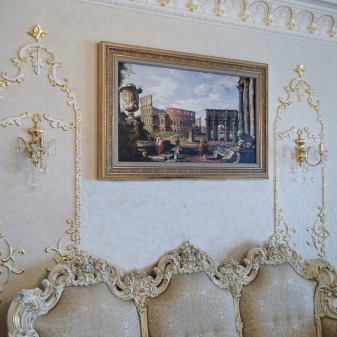
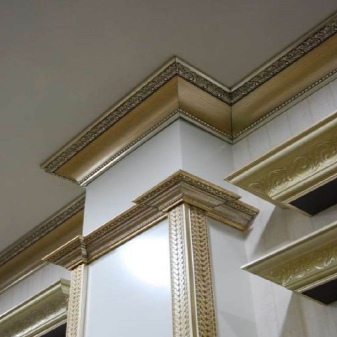
Selection Tips
First of all, it is necessary to approach this action deliberately. Whatever is inside - a picture, or an ornament, or an empty white field - you will have to carefully analyze all the subtleties and apply artistic tact. Sometimes only professional designers who know how to find optimal combinations of tones with texture and material are able to solve this problem correctly. When choosing on your own, you must first of all look to ensure that the product matches the color in relation to:
-
wallpaper;
-
curtains;
-
pillows.
But it is no less important to take into account the correspondence of the color of the frame and the internal content. So, if the baguette goes well with the decor in the pink room and does not match the green interior area, the result is unlikely to suit even the most undemanding people. Narrow designs can be perfectly combined with light painting, which does not differ in particular dynamics. They also work in harmony with fine graphics and pencil sketches. In this case, a completely organic contrast is formed.
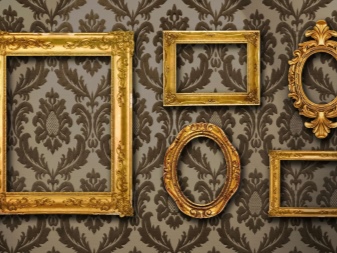
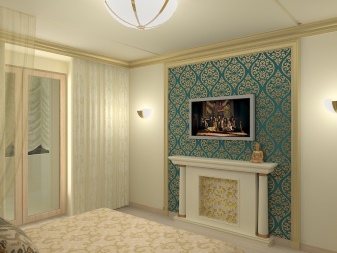
A large width baguette frame can be served in a completely different way. Inside it should be the most dynamic and expressive design. Bright colors and imposing geometric shapes are encouraged. Then it will turn out to very harmoniously fit the work or ornament into the created environment. Large paintings must be placed in large frames to emphasize visual significance.
A wide baguette can also be used for a medium-sized canvas. This creates an unusual expressive effect. However, in such a case, a uniform design of all paintings and graphics in the same room will be required. In the best case, the texture of the baguette and what is inside must match.
Even a match in paint strokes, in ornaments is welcomed; in some cases, lush gilded frames look good, while in others it is more correct to replace them with modernist designs.
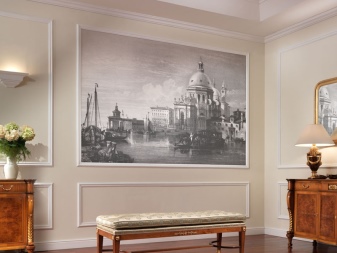

Occasionally, frames are used that are one tone darker or lighter than the main background. It is also believed that a cold baguette is combined with cold flowers, and a warm one with warm colors. But there is an exception to this rule: natural wood is perfectly combined with a variety of shades. And yet it is worth entrusting the choice to qualified performers. The result is worth it; and also, art galleries try to offer free design services when ordering paintings from them.
Experienced decorators will not "choose a baguette for the wall." The point is even that specialists can easily recognize the color tastes of the customer from the selected images. Therefore, it is almost useless to take into account the color of furniture, wallpaper, floors and ceilings. Real professionals always inspect the premises before recommending anything. In extreme cases, you should not even take pictures, but bring a fragment of the wallpaper; Finally, it is worth emphasizing that sometimes an eclectic approach is used.
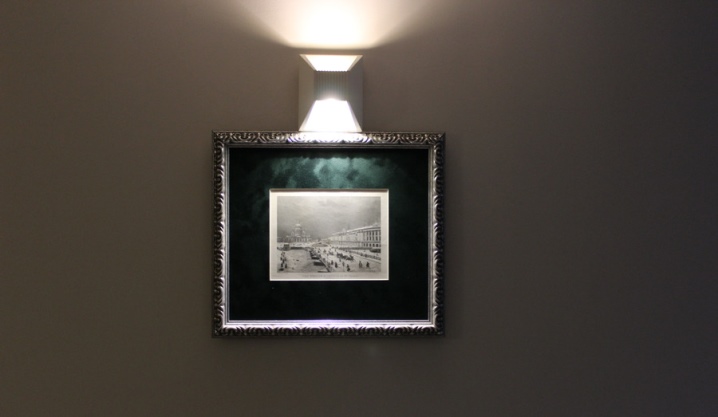
Mounting
You can attach a baguette to the wall using various methods.The decision depends on how the wrong side is done. There are three main options:
-
flat sole;
-
oblong block;
-
shortened ceiling product.
The first type should be hung with the aim of:
-
distribute the zones in the room;
-
frame objects or niches around the perimeter;
-
show transitions of areas that are heterogeneous in material, color and ornament.
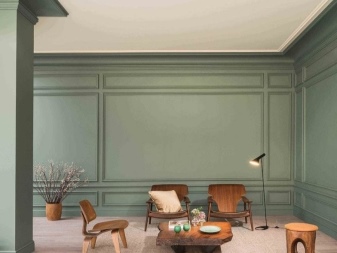
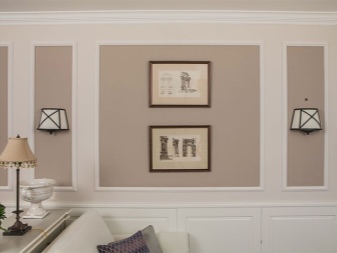
The second option is better suited if you need to raise the ceiling or make it heavier. And also he will allow you to prepare a hidden backlight. The upper edge is only lowered horizontally. The part that allows you to glue the baguette to the ceiling becomes a landing area for the LED strip.
Some of the supplied products are equipped with corner blocks, which, along with the interior function, help to avoid the "cutting" of the baguette and tedious joining at the corner, which most of all tires inexperienced people.
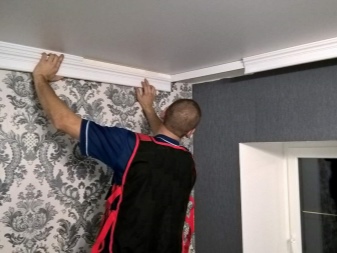

Attention should be paid to the glue used. When finishing on a plasterboard surface, this option is almost ideal. But an attempt to save money turns into serious unpleasant consequences. Bad glue will lose its quality after 8-12 months. Corner cutting is best done with a miter box: it is this tool that allows you to form the most accurate line. Attention: since baguettes are made mainly of expanded polystyrene, there may be a serious difference in quality, and the frame itself must be chosen as carefully as possible.
Recommendations:
-
clean surfaces;
-
make careful measurements;
-
make a cut with a miter box with a minimum tooth;
-
checking the quality of the joint;
-
press the baguette not with your fingers, but with the edge of your palm;
-
draw up a well-thought-out scheme in advance and follow it.

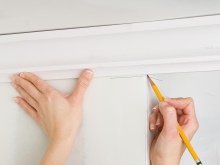
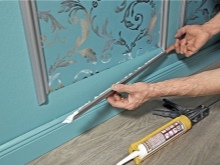
Examples in the interior
Quite a good, although not so catchy in appearance, solution - paired baguettes with light floral patterns. They will look good on a wall covered with bright wallpaper. The rounded corners also work well.
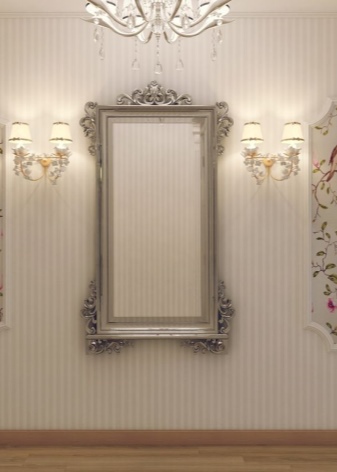
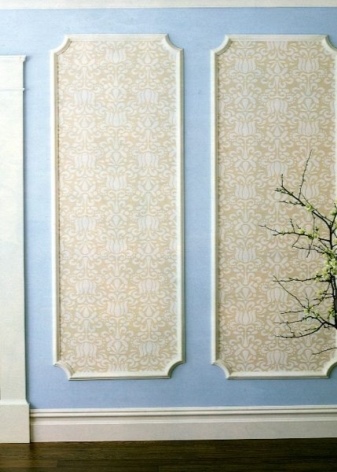
But wall moldings with a pronounced white frame can also be a good choice.
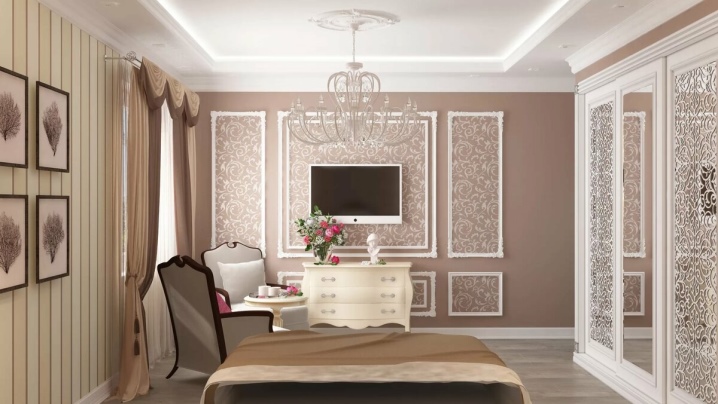
And this is how another type of baguette may look like in the interior. True, many designers are outraged, considering this combination too clumsy, but this is more a matter of taste.













The comment was sent successfully.